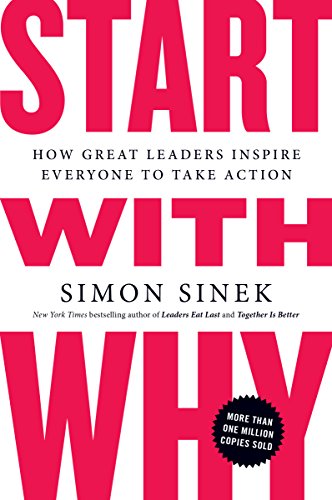

This article is an excerpt from the Shortform summary of "Start With Why" by Simon Sinek. Shortform has the world's best summaries of books you should be reading.
Like this article? Sign up for a free trial here .
What are Simon Sinek’s views on leadership? What does he think is the most important element of good leadership?
Simon Sinek’s views on leadership center around establishing trust. We’ll cover why Simon Sinek believes good leadership creates trust within the business, and how to establish the trust necessary to be a great leader.
Here’s Simon Sinek on leadership from his book Start With Why.
Simon Sinek on Leadership: Establishing Trust
Simon Sinek’s views on leadership center on trust. Trust is a gut feeling–it exists in the limbic brain and can’t be rationalized. That’s why we trust certain companies even when things go wrong, and mistrust other companies even though they do everything right.
And when people trust a leader or organization, they place a higher value on it. Sinek defines value as “the transference of trust,” meaning value is the result of people trusting in you, your product, or your company. This is why trust is so important in Simon Sinek’s views on leadership.
Consequently, you can’t rationally convince someone to trust you. You have to earn that trust by showing them that you share their values and beliefs. That happens when you clearly communicate your WHY. Once people trust you, they will follow you willingly. This is the essence of Simon Sinek’s leadership.
Trusting Your Leadership
When a group of people with similar beliefs have a cause, challenge, or goal to chase creates a strong sense of teamwork. This gives employees something to work toward, which is how great ideas happen. Encouraging this sense of teamwork is part of Simon Sinek’s leadership strategy.
This is very different from average companies, who just give people things to work on. In these situations, people do their jobs and nothing more.
It’s the job of a great leader to create an environment where inspired work can happen.
Great leaders create strong company cultures where everyone works toward the same goal. They inspire employees to believe and pursue WHY instead of WHAT. This is why Simon Sinek’s leadership beliefs center on trust and company culture.
There’s a parable of a man who comes across three bricklayers working. He asks the first bricklayer what he’s doing; the first bricklayer grumbles, “I’m laying bricks.” He asks the second the same question and gets the reply, “I’m making money.” Lastly, he asks the third bricklayer, who replies in awe, “I’m building a cathedral.”
All three men were doing the same work. The first two men had a job. The third had a calling.
By starting with WHY, you give your employees a cathedral.
Simon Sinek’s Leadership & Inspiring Your Team
Simon Sinek’s idea of leadership creates an inspired team. An inspired team shows many benefits, including:
- Creating space for innovation.
- When employees understand the company’s WHY, they feel a personal challenge to explore new ways to bring the WHY to life. Steve Jobs didn’t personally build the Mac or the iPod, but he gave his talented team the context around which to innovate and explore the options for bringing the WHY to life.
- Ignoring competition.
- When a company is only concerned with the competition, they get into a commodities race. They make small tweaks to features (like the Motorola RAZR we mentioned in Chapter 2) in response to other companies, instead of innovating.
- When a team focuses on their unique WHY, they can put on blinders and build things that align with their mission, regardless of what others are doing.
- Persisting through failure and hard work.
- When employees have a clear sense of WHY, they’re more likely to embrace and move through failure. Failure becomes a step on the way to the goal rather than a catastrophic setback.
- Inspiration revolutionizes employees’ perspective on their jobs. Employees start to see even their least favorite tasks as necessary to achieving their WHY.
- Trust in the team.
- Inspired people realize that everyone–from the CEO down to the most entry-level worker–needs each other to reach their common goal.
- Employees are less focused on self-gain, but instead do what’s best for the mission and the organization as a whole.
- Trust in leadership.
- Inspired employees feel protected in their companies and by their leaders, because they feel leadership make decisions in service of a greater purpose rather than their own self-gain. That gives employees the confidence to take risks, explore, be creative, and push the company forward.
Building Your Tribe on Inspiration
Building an organization that’s based on trust starts with the hiring process. When you have a strong WHY, you can find employees who are also passionate about your mission.
The trick to building a tribe based on inspiration is to look beyond a résumé. Don’t just hire skilled people that you then have to motivate. Instead, hire motivated people who believe in your WHY, and inspire them.
Hiring the right people often has a flywheel effect – the more people you bring on who fit your culture, the easier it is to recruit people who also fit the culture, and so on. This is an important element of Simon Sinek’s leadership approach.
Here are two real-world examples that show the effects of hiring employees who believe in your WHY:
Simon Sinek Leadership Example: The Shackleton Expedition
In the 20th century, Ernest Shackleton set out to cross the Antarctic. He put out an ad for this unprecedented journey: “Men wanted for hazardous journey. Small wages, bitter cold, long months of complete darkness, constant danger, safe return doubtful. Honour and recognition in case of success.” This attracted only people who loved the WHY and could endure the pain.
Shackleton didn’t ask for his WHAT: “Men needed for adventure. 5 years experience required. Must know how to maintain ship and pitch tents.”
He and his team of twenty-seven men ended up stranded in the Antarctic for ten months when their ship, the Endurance, sank. Remarkably, no one died, because Shackleton hired inspired people.
———End of Preview———

Like what you just read? Read the rest of the world's best summary of "Start With Why" at Shortform . Learn the book's critical concepts in 20 minutes or less .
Here's what you'll find in our full Start With Why summary :
- What Steve Jobs did right compared to every other business leader
- How to define your organization's WHY
- How to help your organization avoid losing its edge as it succeeds






